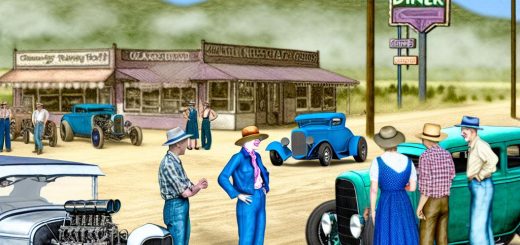Contents
The Ford Model T, affectionately known as the “Tin Lizzie,” is one of the most influential automobiles ever produced. Its development brought about a seismic shift in the automotive and societal landscape. This article delves into the history, features, and impact of the Ford Model T on society.

Historical Background
The Conception of Model T
In 1908, the Ford Motor Company, led by Henry Ford, introduced the Model T. Ford’s vision was to create a reliable, affordable car for the average American. Before the Model T, automobiles were largely considered luxury items. The advent of Model T marked the dawn of a new era where cars became accessible to the masses.
Production Innovations: The Moving Assembly Line
In 1913, Ford introduced the moving assembly line, a groundbreaking development in manufacturing. The assembly line allowed for mass production which significantly lowered the costs. This was crucial in making the Model T affordable. By 1924, a Model T could be bought for as low as $260, which would be around $3,800 today adjusted for inflation.
Features and Specifications
Engine and Performance
The Model T was equipped with a 2.9-litre inline four-cylinder engine, generating 20 horsepower. It had a top speed of about 40-45 miles per hour. The car’s fuel consumption was approximately 13 to 21 miles per gallon, which was quite efficient for its time.
Transmission and Handling
The Model T utilized a planetary gear transmission and was one of the first automobiles to feature a left pedal for changing gears, a middle pedal for reverse, and a right pedal as a brake. The steering wheel was positioned on the left, which became the standard for American cars.
Body and Design
The Model T was originally offered in several body styles including a five-seat touring car, a two-seat runabout, and a seven-seat town car. The car was built with vanadium steel, which was stronger and lighter than the materials used by other manufacturers at the time.
Societal Impact
The Automobile for the Masses
The Model T’s affordability made car ownership a reality for average American households. This profoundly affected society as it brought about greater mobility and freedom for individuals and families.
Spurring Economic Growth
The mass production of Model T stimulated growth in other industries such as steel, rubber, and glass. It also led to the development of a network of service stations, repair shops, and car dealerships. Moreover, the demand for better roads led to a boom in the construction sector.
The Legacy of Ford Model T
An Icon of the 20th Century
The Model T is often regarded as the car that ‘put America on wheels’. In 1999, the Ford Model T was named the “Car of the Century” by an international panel of automotive journalists and experts.
Inspiring Modern Automotive Industry
The manufacturing techniques developed for the Model T laid the foundation for modern automobile manufacturing. The principles of assembly line production are still central to the automotive industry today.
Final words
The Ford Model T was not just an automobile but a catalyst that brought about widespread social and economic changes. Its innovative design, coupled with assembly line production, made it affordable and within reach of the average American. The Model T stands as a testament to how innovation can drive societal transformation and remains an enduring icon in automotive history.






